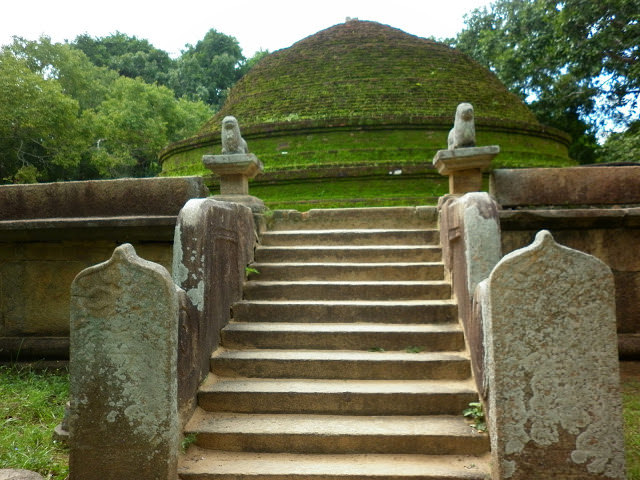OB03156 Galapāta Vihāra Inscribed Rock
IN03197 Galapāta Vihāra Rock Inscription
This inscription is engraved on a rock by the side of the flight of steps leading to the shrines and monastic buildings at the Galapāta Vihāra, situated about two miles south-west of the Rest House at Bentoṭa in the Valallāviṭi Kōraḷē. Edward Müller published the first scholarly account of the inscription in his Ancient Inscriptions in Ceylon (1883, p. 71, no. 165). The record opens with a Sanskrit śloka in the Śārdulavikrīḍita metre, before switching to Sinhalese prose. It states that a dignitary named Mindal (Mahendra), who held the office of Demaḷa-adhikāra and was administering the Pasyodun District, founded the Galapāta Vihāra with the royal assent and with the cooperation of his mother, his nephews Kodānāvan of Miyaṅguṇubim and Vijayānāvan of Degalaturubim, and his kinsman Kaṭuvitnā Sätumba or Devu. It also gives a long list of the lands and serfs granted to the temple by its founders and ends with the signatures of the donors and of the witnesses to the document.
The date of the inscription is a subject of scholarly debate. The record is dated in the thirtieth year of a king called Parākramabāhu. There are three kings of this name who ruled for more than thirty years: Parākramabāhu I (r. 1153–1186), Parākramabāhu II (r. 1236–1271) and Parākramabāhu VI (r. 1412–1467). Since the inscription can be dated on palaeographic grounds to the twelfth or thirteenth century, the last of these kings can be ruled out immediately. However, scholars disagree over whether the inscription should be attributed to Parākramabāhu I or II. Overall, the evidence is not wholly decisive and the record could belong to either monarch.
OB03150 Magul-maha-vihāra Fragmentary Pillar of Vihāra-mahā-devī
Magul Maha Viharaya, Lahugala
IN03189 Magul-maha-vihāra Fragmentary Pillar Inscription of Vihāra-mahā-devī
This fragmentary inscription is engraved on three sides of a broken stone pillar found among the ruins of an ancient monastery situated in the Pānama Pattu of the Batticaloa District, about a mile to the south of the eighth mile-stone on the road from Potuvil to Vällavāya. The ancient name of this monastery was Rūṇu-maha-vehera; it is now known as Magul-maha-vihāra. The upper half of the pillar has been broken off and lost, resulting in the loss of large parts of the inscription. The record can be dated, on palaeographic grounds, to the fourteenth century. The extant portion of the inscription records that Rūṇu-maha-vehera, the ancient monastery at the site, was completely renovated by Vihāra-mahā-devī, the consort of the two brother kings named Parākramabāhu, after it had fallen into ruin and that she endowed it with lands for its maintenance. It seems that the inscription originally included a detailed account of the successful campaign fought by the brother kings after the Coḷa army but the inscription is mutilated just at the point where the reference to this historical event begins. The pillar was apparently set up after the demise of these kings, since the inscription tells us in the past tense that Vihāra-mahā-devī ‘was the chief consort of the two brother kings’. Since these brothers are described as ruling over Rohaṇa in another inscription found at Magul-maha-vihāra (IN03188), it seems likely that they were local princes whose authority was confined to this region, rather than paramount sovereigns of Sri Lanka.
